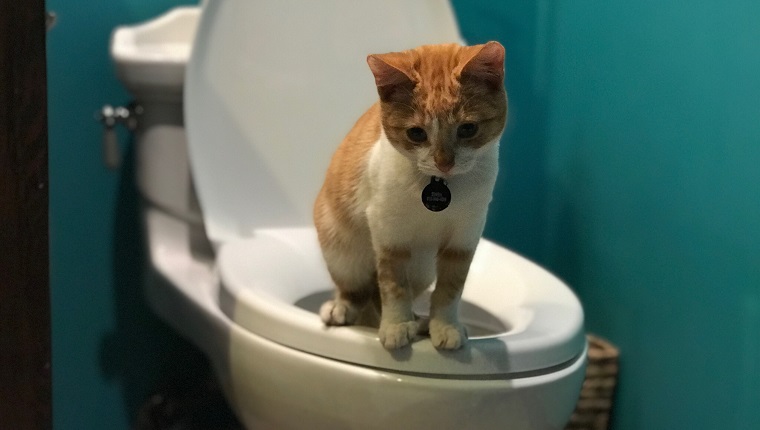What're your thoughts about How to Dispose of Cat Poop and Litter Without Plastic Bags?

Introduction
As feline owners, it's vital to bear in mind exactly how we throw away our feline pals' waste. While it might seem practical to purge pet cat poop down the toilet, this method can have harmful repercussions for both the atmosphere and human health.
Alternatives to Flushing
Fortunately, there are safer and much more accountable methods to deal with cat poop. Take into consideration the adhering to options:
1. Scoop and Dispose in Trash
The most usual method of dealing with pet cat poop is to scoop it right into a biodegradable bag and toss it in the trash. Make sure to make use of a specialized litter scoop and dispose of the waste immediately.
2. Usage Biodegradable Litter
Choose eco-friendly pet cat litter made from materials such as corn or wheat. These trashes are eco-friendly and can be securely dealt with in the trash.
3. Bury in the Yard
If you have a lawn, take into consideration hiding cat waste in a designated area away from vegetable gardens and water resources. Make certain to dig deep enough to avoid contamination of groundwater.
4. Install a Pet Waste Disposal System
Buy a family pet garbage disposal system particularly designed for pet cat waste. These systems use enzymes to break down the waste, minimizing odor and environmental impact.
Wellness Risks
Along with environmental concerns, purging feline waste can also posture health and wellness risks to human beings. Cat feces might include Toxoplasma gondii, a bloodsucker that can trigger toxoplasmosis-- a possibly serious ailment, especially for expectant women and people with damaged immune systems.
Ecological Impact
Purging cat poop presents harmful microorganisms and bloodsuckers right into the water system, posturing a significant danger to water ecological communities. These contaminants can negatively impact marine life and compromise water high quality.
Final thought
Accountable family pet possession prolongs beyond offering food and shelter-- it likewise entails correct waste monitoring. By refraining from purging feline poop down the toilet and choosing different disposal techniques, we can minimize our ecological footprint and shield human wellness.
Why Can’t I Flush Cat Poop?
It Spreads a Parasite
Cats are frequently infected with a parasite called toxoplasma gondii. The parasite causes an infection called toxoplasmosis. It is usually harmless to cats. The parasite only uses cat poop as a host for its eggs. Otherwise, the cat’s immune system usually keeps the infection at low enough levels to maintain its own health. But it does not stop the develop of eggs. These eggs are tiny and surprisingly tough. They may survive for a year before they begin to grow. But that’s the problem.
Our wastewater system is not designed to deal with toxoplasmosis eggs. Instead, most eggs will flush from your toilet into sewers and wastewater management plants. After the sewage is treated for many other harmful things in it, it is typically released into local rivers, lakes, or oceans. Here, the toxoplasmosis eggs can find new hosts, including starfish, crabs, otters, and many other wildlife. For many, this is a significant risk to their health. Toxoplasmosis can also end up infecting water sources that are important for agriculture, which means our deer, pigs, and sheep can get infected too.
Is There Risk to Humans?
There can be a risk to human life from flushing cat poop down the toilet. If you do so, the parasites from your cat’s poop can end up in shellfish, game animals, or livestock. If this meat is then served raw or undercooked, the people who eat it can get sick.
In fact, according to the CDC, 40 million people in the United States are infected with toxoplasma gondii. They get it from exposure to infected seafood, or from some kind of cat poop contamination, like drinking from a stream that is contaminated or touching anything that has come into contact with cat poop. That includes just cleaning a cat litter box.
Most people who get infected with these parasites will not develop any symptoms. However, for pregnant women or for those with compromised immune systems, the parasite can cause severe health problems.
How to Handle Cat Poop
The best way to handle cat poop is actually to clean the box more often. The eggs that the parasite sheds will not become active until one to five days after the cat poops. That means that if you clean daily, you’re much less likely to come into direct contact with infectious eggs.
That said, always dispose of cat poop in the garbage and not down the toilet. Wash your hands before and after you clean the litter box, and bring the bag of poop right outside to your garbage bins.
https://trenchlesssolutionsusa.com/why-cant-i-flush-cat-poop/

As a serious reader about Can You Flush Cat Poop Down The Toilet?, I imagined sharing that portion was worthwhile. Loved our content? Please share it. Let someone else locate it. Thank you so much for your time spent reading it.
Call Today